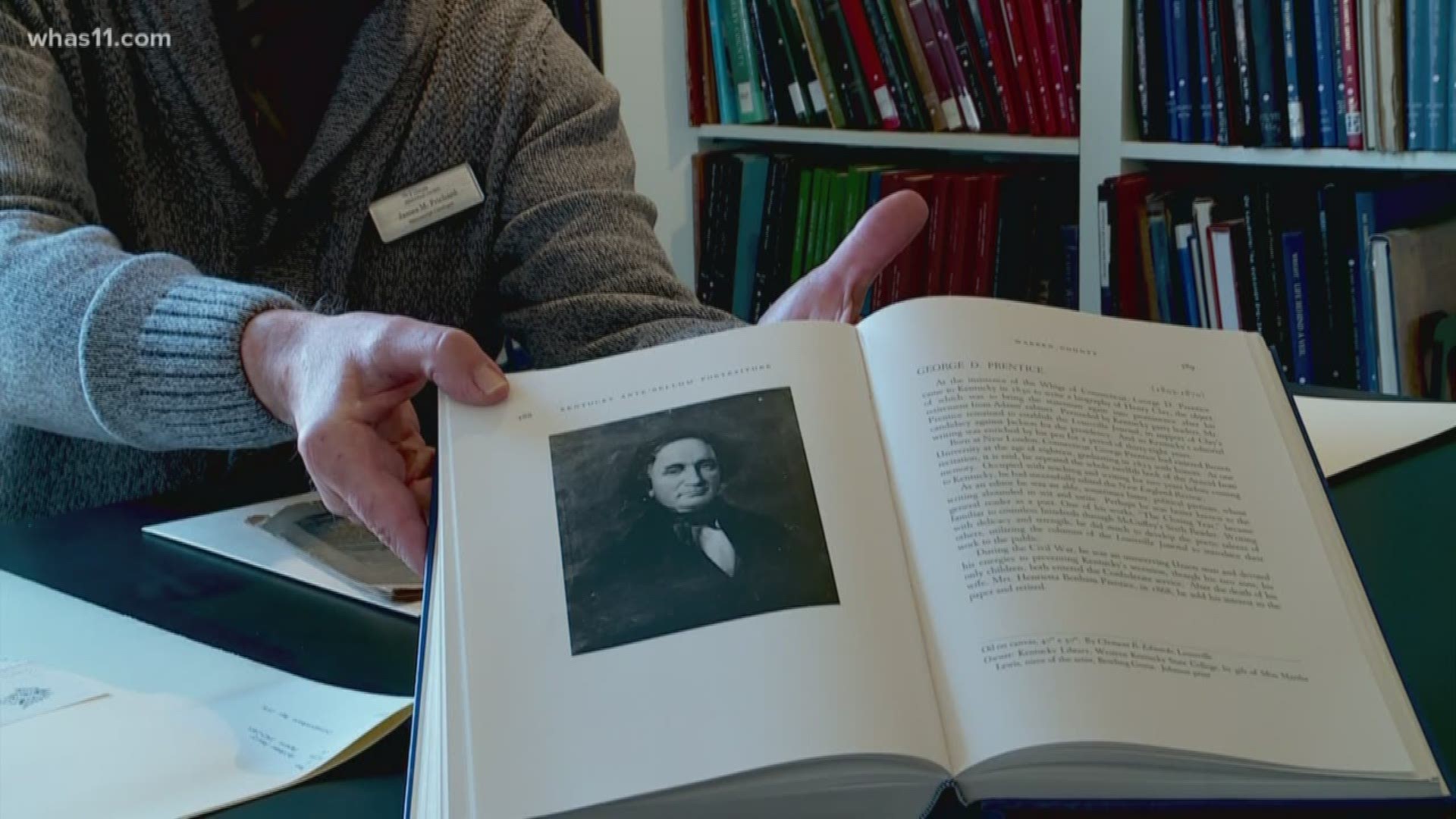LOUISVILLE (WHAS11) -- One of Louisville's monuments was moved into storage Tuesday morning.
City crews removed the George Prentice statue from just outside the Louisville Free Public Library on December 11 around 9 a.m.
For the first time since this statue was unveiled to the public in 1913, it has been taken out of public view. The plan is to move it to a city storage facility on Lexington Road.
As publisher of the Louisville Journal newspaper in the 1800's, Prentice wrote pro-slavery editorials and hated Catholics, the Irish and any immigrant to Louisville. His fiery rhetoric is believed to have triggered Bloody Monday riots that killed 22 Catholic and Irish residents.
RELATED: Two Louisville statues vandalized
The city is still in discussions about where to move the John Castleman statue, located in Cherokee Triangle.
The history behind George Prentice
The statue of George Dennison Prentice was widely controversial up until its removal. Prentice was the founder and editor of The Louisville Journal in the mid-1800's.
During his time there, he wrote editorials filled fiery rhetoric.
"He was very much respected and feared by Democrats because his pen was sort of dipped in acid so he was very sarcastic, very witty," James Prichard with the Filson Historical Society said. "He issued a lot of editorials that were nativist and anti-immigrant."
Prentice's rhetoric also was anti-Catholic and anti-Irish, along with racist. Prichard said those editorials were just a "very brief part of his career" during political turmoil in the nation.
"I think that Prentice was guilty more of writing political rhetoric," Prichard said. "I don't really think it reflected his true feelings about immigrants per se."
The biggest controversy surrounding Prentice is the Blood Riots in Louisville in 1855. Many point the finger at Prentice for sparking the riots with his editorials. Members of the American Know-Nothing Party attacked German and Irish citizens to prevent them from moving on Election Day.
Prichard said that part of Prentice's legacy has "never quite left him," but says the history of the incident is a gray area.
"Most historians from what I understand, have absolved him from actually being the man that lit the fuse," Prichard said. "He actually risked his life to save some immigrants and some of their businesses."
In the public hearings, with hundreds of public comments about the Prentice and Castleman statues, many people associated both statues with the Confederacy. But, this is a stretch for Prentice, Prichard says. He describes Prentice as a "staunch Union man."
"He has been credited by some historians as keeping Kentucky from leaving the union during the secession crisis," Prichard said. "He wasn't a confederate, he didn't advocate secession and really in one sense its one of the few statues to Kentucky unionist in the commonwealth."
Prichard said Prentice played a big role in the history of Louisville, but says it wasn't so black and white. He said many historical figures have glimpses of bad ro wrong in their actions.
"He was a complex person and the times were very complex," Prichard said.
►Make it easy to keep up-to-date with more stories like this. Download the WHAS11 News app now.
Have a news tip? Email assign@whas11.com, visit our Facebook page or Twitter feed.

